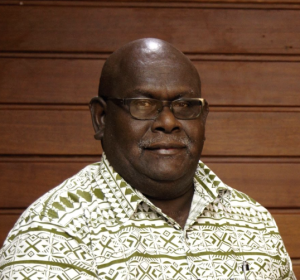The Solomon Islands economy is showing moderate growth prospects with several positive trends across key sectors, as highlighted in a recent presentation by Raynold Moveni, Deputy Governor of the Central Bank of Solomon Islands, at the 13th Australia Solomon Islands Business Forum held on September 3, 2024, in Honiara. The presentation offered insights into the macroeconomic performance, trade dynamics, and financial stability of the country, with key points reflecting a cautiously optimistic outlook for the near future.

Raynold Moveni Deputy Governor of the Central Bank of Solomon Islands,
The Solomon Islands is set to experience economic growth of 3 per cent in 2024, following a challenging period during the COVID-19 pandemic, which severely impacted the country’s performance. Growth is expected to moderate to 2.5 per cent in the medium term. Recovery in the commodities sector, particularly in forestry, agriculture, fishing, and mining, is a key factor driving this growth. These sectors have demonstrated stable production levels, and improvements in global demand are likely to further support economic performance.
Despite positive trends in these sectors, the Solomon Islands continues to face a trade deficit, though this has narrowed. In 2023, the country’s exports reached SBD 496 million, while imports were SBD 783 million. Key exports include timber and fish products, which play a crucial role in the Solomon Islands’ economy. Foreign reserves remain healthy, with enough to cover over five months of imports, ensuring stability in international trade dealings.
Banking Sector Resilience
The Solomon Islands’ banking sector remains strong and well-capitalised. Its capital adequacy ratio has consistently been above 30 per cent in recent years, with an average return on assets (ROA) of 2.7 per cent since 2019. This reflects the sector’s ability to absorb financial shocks and continue lending to support private sector growth. Lending has increased steadily, contributing to broader economic activity, as businesses and individuals seek financing to drive development projects.
Inflation has also eased significantly, with a forecast of 2.5 per cent by the end of 2024, down from 9.5 per cent in 2022. This easing of price pressures is driven by stabilisation in both imported and domestic goods. While the fiscal deficit remains a concern, government efforts have led to a narrowing of the gap between expenditure and revenue. However, addressing this imbalance will be critical for long-term economic stability(4 Moveni ASIBF13).
The Solomon Islands is navigating these economic challenges with a focus on resilience, especially within its banking sector and trade practices, laying the groundwork for sustained growth in the coming years.



